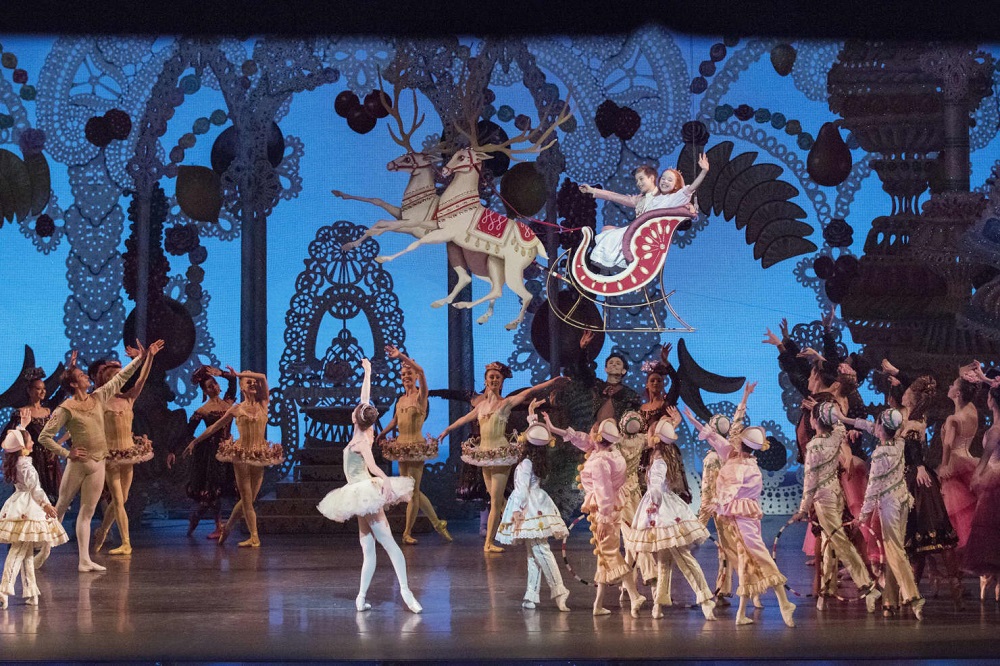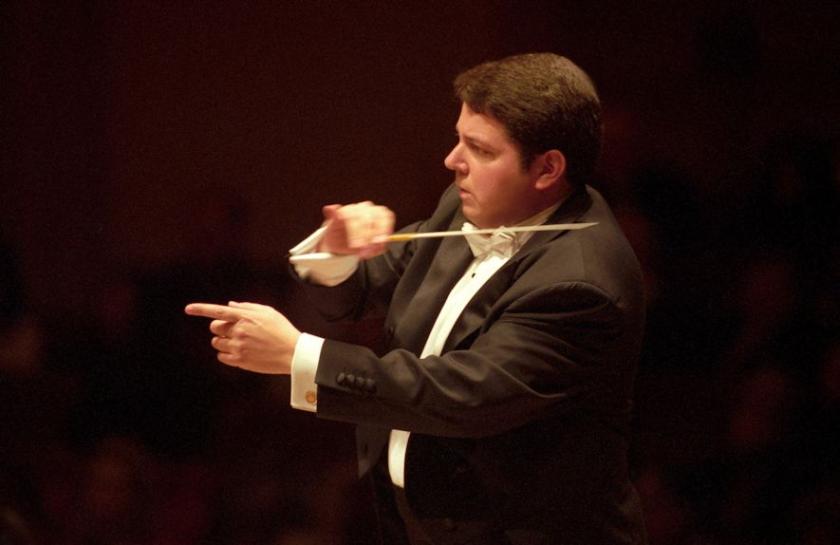Welcome back Andrew Litton, Conductor Laureate of the Bournemouth Symphony, for the latest of many happy annual returns since his tenure as Principal Conductor between 1988 and 1994.
Lighthouse was thronged with devoted supporters for both the performance and pre-concert talk in which the conductor highlighted the balletic thread of a programme inspired by his ongoing work as Music Director of the New York City Ballet and works choreographed and performed there by the legendary George Balanchine.
Litton had amusingly signed off his talk saying how much he was looking forward to performing the works in concert without having to worry about dancers’ tempo preferences. Amply demonstrated throughout every bar of Debussy’s Prélude à l’après-midi d’un faune, Bizet’s Symphony in C and the complete second act of Tchaikovsky’s The Nutcracker, the release from strict balletic constraints was clearly audible – appropriate enough for the Debussy and Bizet, which were conceived as purely orchestral works, but potentially less so with Nutcracker. With sleight of baton and gesture however, the conductor channelled his consummate ballet experience to energise and complement each work with its own natural flexibility and freedom of movement, while cannily holding true to the broader general parameters of dance.
This allowed the diaphanous textures of the Faune to waft heat, light and languor with a captivating and purposeful sensitivity that remained tantalisingly suggestive of thought rather than action to reflect the Mallarmé poem that inspired the composer. The 17-year-old Bizet’s dazzlingly inventive symphony comes as brimful of hyperactive dance rhythms as Beethoven Seven, with the contrasting second movement sporting one of the composer’s most sinuously beautiful oboe melodies, readily foreshadowing steps towards Carmen. The whole work is a choreographic gift, its high spirits affectionately articulated by the conductor without pushing fast tempi to the extremes that can compromise coherence of the piece – and especially the bowing arms of the strings in the finale. Bravo Bournemouth!  How wonderful to hear a complete act of a Tchaikovsky ballet in concert. The superb quality of Act Two of The Nutcracker completely vindicated Litton’s declared stance on the programme (pictured above, the final scene from the New York City Ballet's seasonal classic George Balanchine's The Nutcracker). No-one asked at the talk how many times he’s conducted the complete work, but his comprehensive expertise on the clockwork of this masterpiece was conveyed to the orchestra with thrilling conviction and spontaneity. The irrepressible invention and eloquence of the characteristic dances more often heard as a separate suite led to a cumulatively paced Pas de Deux that nailed the epic climax of the whole work with overwhelming power and intensity. Is there any other music that offers so much from the development of a thematic and rhythmic ear-worm based on the repetition of a descending scale? The Christmassy tinsel of the harps and celesta framed the proceedings with their own special celebratory glitter.
How wonderful to hear a complete act of a Tchaikovsky ballet in concert. The superb quality of Act Two of The Nutcracker completely vindicated Litton’s declared stance on the programme (pictured above, the final scene from the New York City Ballet's seasonal classic George Balanchine's The Nutcracker). No-one asked at the talk how many times he’s conducted the complete work, but his comprehensive expertise on the clockwork of this masterpiece was conveyed to the orchestra with thrilling conviction and spontaneity. The irrepressible invention and eloquence of the characteristic dances more often heard as a separate suite led to a cumulatively paced Pas de Deux that nailed the epic climax of the whole work with overwhelming power and intensity. Is there any other music that offers so much from the development of a thematic and rhythmic ear-worm based on the repetition of a descending scale? The Christmassy tinsel of the harps and celesta framed the proceedings with their own special celebratory glitter.
On this form the Bournemouth orchestra continues to shine with both the CBSO and Hallé as a National Musical Treasure to complement those in London and the UK regional capitals. Special mention has to be made of Anna Payne’s exquisite flute solo that raised the curtain on Debussy’s Faune to initiate the sustained magic of the evening. The sharing of the Bizet oboe melody between Edward Kay and Rebecca Kozam was a hypnotic hook with an eye to a habañera, but the solo prize has to go to principal harpist Eluned Pierce. A minimal raised eyebrow cue from the conductor signalled the most articulate and spellbinding introduction to The Waltz of the Flowers that I’ve heard in many a long year, live or recorded this side of Paradise. Truly a thing of wonder! Keep dancing…














Add comment